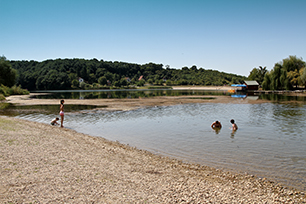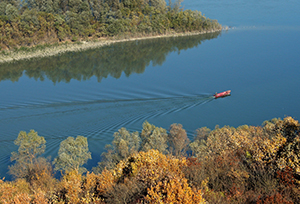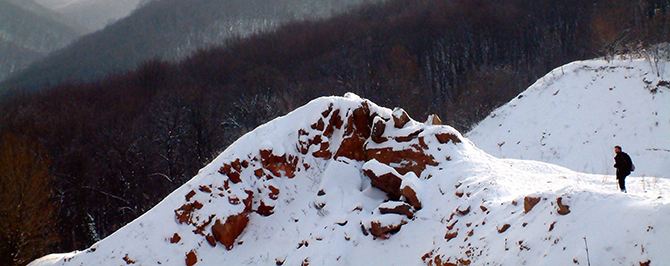
Hidrology & Climate
The hydro-geological features of the Fruska gora are directly conditioned by the complexity of its geological structure, the spatial distribution of the individual types of rock masses, and their interrelations, porosity of the rock masses and the rainfall that feeds the subterranean waters.
According to the size of the pores, there are all of the three basic structural types of porosity: intergranular (in sands and related rocks), fissured (hard cracked rocks) and cavernous (limestones). In them, there are springs of the respective structural type, namely: compacted (free, artesian and sub artesian), broken up and combined.
Springs of a broken structural type have been formed in all kinds of hard rock masses of the Fruska gora. The volume of accumulated water is small. It mostly depends on the degree and pattern of the cracked ness of the rock mass. These waters are important from the viewpoint of the appearance of a large number of springs, especially in the source parts of almost all springs and smaller brooks flowing into them (particularly in flysch-like sediments of the upper Cretaceous, shale of various types, etc.). Somewhat larger volumes of water can be expected in limestones, particularly of the Triass age. In limestones, it is possible to find a specific form of them, i.e. cavernous (karst) sources.
In terms of the importance of the sources of the broken structural type related to the volumes of water and water supply of larger settlements, it should be emphasized that the volumes in this type are very limited.
Groundwater
The largest exploitable volumes of ground water appear in the alluvial sediments of the Danube. In the littoral zone of Novi Sad, water is pumped from these deposits for the supply of the city and the surrounding settlements. However, it should be pointed out that the reserves of water of this type are also limited, new sources must be sought and the reserves economically and prudently managed and exploited.
Tertiary sands, on the edges of the mountain, appear in many places on the surface. They accumulate significant volumes of ground water that feed the water-bearing horizons of the tertiary series. Research and exploitation pumps have detected and confirmed ground water at several locations (Cerevic, Banostor, Novi Sad and a broader area of southern Backa). Three water-bearing horizons have been identified.
-
The first one is 50m deep, hydraulically connected with the alluvial water-bearing environment; optimum debit of vertical wells is 5-10 lit/sec.
-
The second one is up to 130m deep, with good filtration characteristics and debit of 20 lit/sec.
-
The third horizon is 170 to 210m deep, with an optimum debit of 5-17 lit/sec.
CLIMATE AND WEATHER
By its location, the area of Fruska gora mountain should have continental climate, but cover of forests changes this type of climate into a climate with sub continental characteristics. Exception is the climate of the mountain's ridges, with cold winters and chilly summers.
Summer
Sunny mornings, possible afternoon thunderstorms and cool nights. Weather conditions may change quickly in mountainous area. Wear appropriate dress for each season - comfortable clothing, dress in layers, rain gear, sunglasses and sunscreen.
Winter
Unpredictability is the key word for mountain weather in the Fruska gora Mountain. As a result, Park visitors cannot be indifferent about the weather and should be prepared for sudden weather conditions. Cold fronts may down temperatures to -30 degrees C. All visitors should be equipped to handle these conditions, and particularly overnight frosts.








